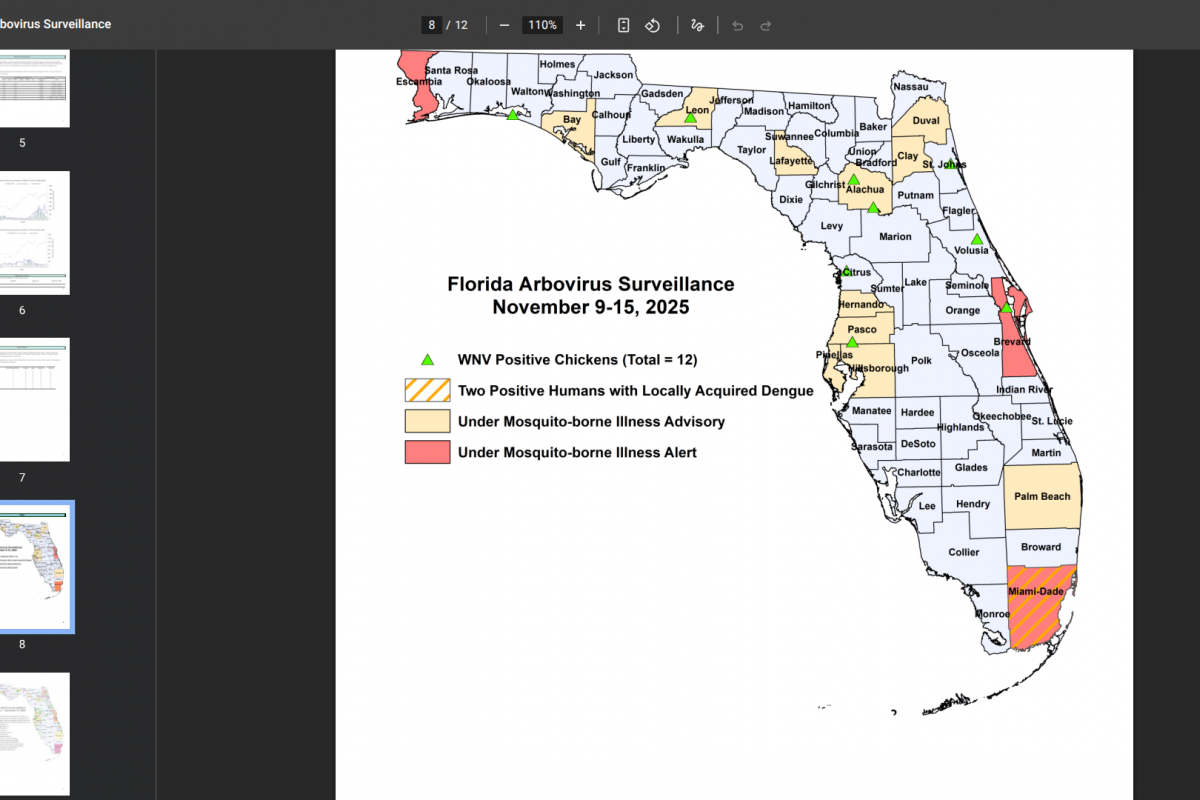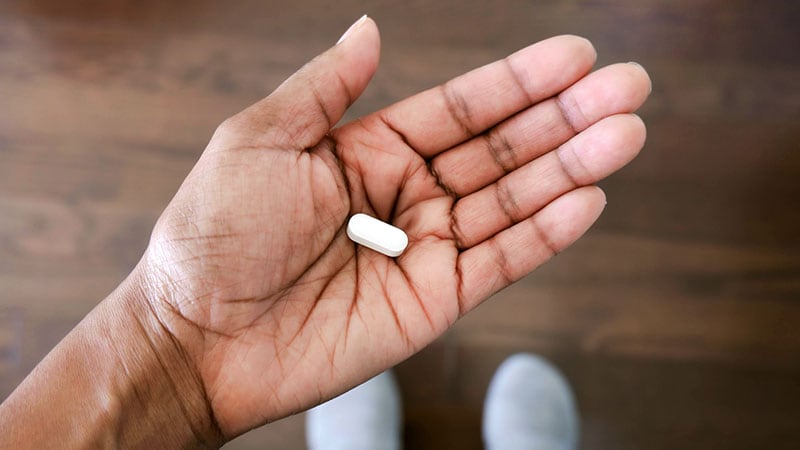NYC Health + Hospitals/Elmhurst Expands Pediatric Care to Include Hematology and Infectious Disease Care – NYC Health + Hospitals

Report on Pediatric Care Expansion at NYC Health + Hospitals/Elmhurst and its Alignment with Sustainable Development Goals (SDGs)
Introduction and Strategic Overview
- On November 18, 2025, NYC Health + Hospitals/Elmhurst announced a strategic expansion of its pediatric specialty services.
- This initiative directly supports the United Nations Sustainable Development Goals (SDGs), particularly SDG 3 (Good Health and Well-being) and SDG 10 (Reduced Inequalities).
- The expansion involves the appointment of two highly qualified physicians to address complex pediatric health issues, thereby closing a critical service gap within the Queens community.
Direct Contribution to SDG 3: Good Health and Well-being
- The initiative enhances local healthcare infrastructure to ensure healthy lives and promote well-being for children, a core objective of SDG 3.
- By adding specialized services, the hospital strengthens its capacity to achieve universal health coverage (Target 3.8) for the pediatric population it serves.
- The new specialists will address conditions directly targeted by SDG 3:
- Infectious Diseases (Target 3.3): The appointment of a pediatric infectious disease specialist will contribute to ending epidemics of communicable diseases such as tuberculosis and HIV.
- Non-Communicable Diseases: The addition of a pediatric hematologist will improve the management of chronic blood disorders, addressing non-communicable diseases from a young age.
Advancing SDG 10: Reduced Inequalities
- This expansion ensures that children in Queens have equitable access to high-level pediatric care, regardless of their socioeconomic background.
- It reduces geographical and financial barriers for families by providing essential services locally, mitigating health disparities.
- Plans to develop community-based education and screening programs for blood disorders further promote health equity by empowering the community with knowledge and preventative care options.
Specialist Appointments and Service Enhancements
-
Dr. Kristina Emeghebo (Pediatric Hematology)
- Area of Focus: Diagnosis, treatment, and management of complex blood disorders, including anemias, hemophilia, and immune-related conditions in infants, children, and young adults.
- Contribution to SDGs: Will develop long-term care plans and psychosocial support for families, fostering well-being (SDG 3) and providing critical support systems that reduce inequality (SDG 10).
-
Dr. Mary Boyle (Pediatric Infectious Diseases)
- Area of Focus: Treatment of complex infections requiring specialized care, including tuberculosis, HIV, MRSA, congenital infections, and tropical diseases.
- Contribution to SDGs: Will provide guidance on infection prevention and protection for immunocompromised children, directly supporting the targets of SDG 3 to combat communicable diseases and improve child health.
Conclusion: Strengthening Community Health Infrastructure for Sustainable Development
- The addition of these specialists builds upon the existing robust pediatric services at NYC Health + Hospitals/Elmhurst, which serves a high volume of young patients.
- This strategic enhancement ensures that the hospital’s care level meets the community’s evolving needs, reinforcing its commitment to public health and the Sustainable Development Goals.
- By investing in specialized pediatric care, the institution makes a long-term contribution to the health, well-being, and equity of future generations in New York City.
1. SDGs Addressed in the Article
-
SDG 3: Good Health and Well-being
This is the most prominent SDG in the article. The entire text focuses on the expansion of pediatric specialty care at NYC Health + Hospitals/Elmhurst. By adding specialists in pediatric infectious diseases and hematology, the hospital is directly working to “ensure healthy lives and promote well-being for all at all ages,” with a specific focus on infants, children, and adolescents. The article details the treatment of numerous diseases, from communicable ones like HIV and tuberculosis to non-communicable blood disorders, which aligns perfectly with the core mission of SDG 3.
-
SDG 10: Reduced Inequalities
The article addresses this goal by highlighting efforts to improve access to specialized healthcare for a specific community. The CEO, Dr. Helen Arteaga, states that the new services help “close a critical gap in services for pediatric patients.” Furthermore, Dr. Laura Iavicoli emphasizes that this expansion “ensures that families in Queens have access to the highest level of pediatric care close to home.” This focus on providing localized, accessible, high-level care in a public hospital system aims to reduce health disparities that can arise from geographic or economic barriers. Dr. Kristina Emeghebo’s background in researching “disparities in health care” further reinforces this connection.
2. Specific SDG Targets Identified
-
Target 3.2: End preventable deaths of newborns and children under 5 years of age.
The article supports this target by describing the hospital’s “robust care offered for infants, children, and adolescents.” The expansion includes care for complex and potentially fatal conditions. The hospital’s Pediatric Newborn Service, which includes a Neonatal Intensive Care Unit and cares for over 4,500 infants annually, is a direct mechanism for reducing neonatal and child mortality.
-
Target 3.3: End the epidemics of AIDS, tuberculosis, malaria and neglected tropical diseases and combat other communicable diseases.
This target is directly addressed by the introduction of Dr. Mary Boyle, a specialist in pediatric infectious diseases. The article explicitly lists the diseases she will treat, which include “tuberculosis, HIV… and travel and tropical infections such as malaria, dengue, chikungunya, typhoid, and schistosomiasis.” Her role also includes providing “guidance on infection prevention,” which is crucial for combating the spread of communicable diseases.
-
Target 3.4: Reduce by one third premature mortality from non-communicable diseases through prevention and treatment and promote mental health and well-being.
Dr. Kristina Emeghebo’s specialization in pediatric hematology directly relates to this target. She treats and manages non-communicable “blood disorders in infants, children and young adults,” including “anemias, bleeding disorders such as hemophilia… and immune-related conditions.” Her plan to “develop community-based education and screening programs for blood disorders” aligns with the prevention aspect of this target, while her work providing “psychosocial support for patient families” touches upon the well-being component.
-
Target 3.8: Achieve universal health coverage, including financial risk protection, access to quality essential health-care services and access to safe, effective, quality and affordable essential medicines and vaccines for all.
The article describes a public hospital, part of “the largest public health care system in the nation,” expanding its services to better meet community needs. By adding highly specialized pediatric care, the hospital is increasing “access to quality essential health-care services” for the children of Queens. The goal of closing a “critical gap in services” is a clear step towards more comprehensive health coverage for the local population.
-
Target 10.2: By 2030, empower and promote the social, economic and political inclusion of all, irrespective of age, sex, disability, race, ethnicity, origin, religion or economic or other status.
By ensuring that specialized pediatric care is available locally within a public health system, the initiative works to reduce inequalities in health outcomes. It removes the barrier of having to travel far or seek expensive private care for complex conditions, thereby promoting inclusion for families in Queens regardless of their economic status. Dr. Emeghebo’s research focus on “disparities in health care” shows a conscious effort to address and mitigate these inequalities through clinical practice.
3. Indicators for Measuring Progress
The article does not provide specific data points for official SDG indicators. However, it implies several metrics that could be used to measure progress towards the identified targets:
-
Implied Indicator for Target 3.2: Reduction in pediatric and neonatal mortality rates at the hospital.
While no rates are given, the article mentions that the hospital’s Newborn Service “cares for the more than 4,500 infants born at NYC Health + Hospitals/Elmhurst each year.” Tracking the health outcomes and survival rates of these infants, especially those in the Neonatal Intensive Care Unit, would be a direct measure of progress.
-
Implied Indicator for Target 3.3: Incidence and prevalence of specific infectious diseases in the pediatric population served by the hospital.
Progress could be measured by tracking the number of cases of tuberculosis, HIV, malaria, and other tropical diseases treated by Dr. Boyle. A reduction in transmission rates, particularly for congenital infections, would be a key performance indicator.
-
Implied Indicator for Target 3.4: Number of children with chronic blood disorders receiving long-term care and improved health outcomes.
The success of Dr. Emeghebo’s practice could be measured by the number of patients enrolled in long-term care plans, adherence to treatment, and a reduction in complications or hospitalizations related to their chronic conditions. The number of people reached through her “community-based education and screening programs” would also be a relevant metric.
-
Implied Indicator for Target 3.8: Increased access to and utilization of specialized pediatric services.
The article states the Pediatric Emergency Department “cares for over 55,000 infants, children and adolescents and their families yearly.” An indicator of progress would be the number of patients who are now able to receive specialized hematology and infectious disease care locally at Elmhurst instead of being referred elsewhere or going without. Patient intake numbers for the new specialists would serve as a direct measure of increased service coverage.
4. Summary Table: SDGs, Targets, and Indicators
| SDGs | Targets | Indicators (Mentioned or Implied in the Article) |
|---|---|---|
| SDG 3: Good Health and Well-being | 3.2: End preventable deaths of newborns and children under 5 years of age. | Number of infants cared for annually (4,500+); provision of a Neonatal Intensive Care Unit; improved health outcomes for children with complex conditions. |
| 3.3: End the epidemics of AIDS, tuberculosis, malaria and neglected tropical diseases… and combat other communicable diseases. | Provision of specialized treatment for pediatric HIV, tuberculosis, malaria, dengue, etc.; guidance on infection prevention. | |
| 3.4: Reduce premature mortality from non-communicable diseases through prevention and treatment. | Provision of diagnosis, treatment, and management for chronic blood disorders (hemophilia, anemias); development of community-based education and screening programs. | |
| 3.8: Achieve universal health coverage… access to quality essential health-care services. | Expansion of specialized pediatric services within a public hospital system; closing a “critical gap in services” for the community; number of annual pediatric emergency visits (55,000+). | |
| SDG 10: Reduced Inequalities | 10.2: Empower and promote the social… inclusion of all, irrespective of… economic or other status. | Providing access to the “highest level of pediatric care close to home” for families in Queens; addressing “disparities in health care” through a public health system. |
Source: nychealthandhospitals.org
What is Your Reaction?
 Like
0
Like
0
 Dislike
0
Dislike
0
 Love
0
Love
0
 Funny
0
Funny
0
 Angry
0
Angry
0
 Sad
0
Sad
0
 Wow
0
Wow
0













































































